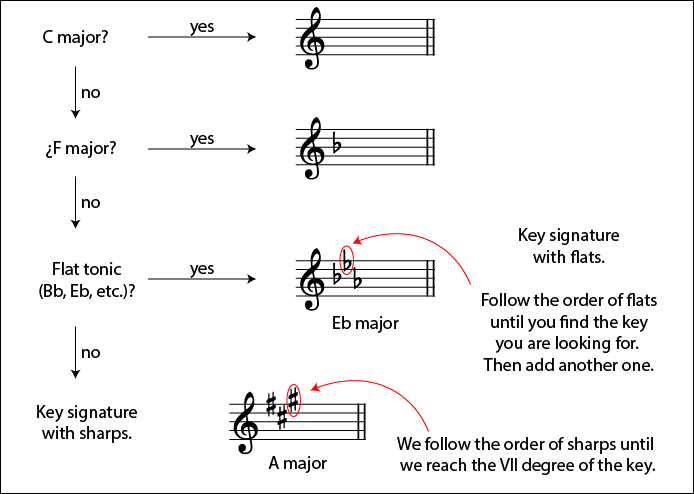Reference : building key signatures
Major Scales
To construct the key signature of a major key, it is important to remember that C major has no key signature. Sharps or flats are used in all other scales.
Major keys based on a flat note, G flat, E flat, D flat, etc. use key signatures with flats. The only exception is F major. So if you are looking for a key signature, you can assume that it uses sharps if it is not F major or does not begin with a flat:

Once the accidentals used in the key signature are known, the following procedure can be used to create the key signature:
Building Key Signatures with Sharps:
Follow the order of the sharps until you reach the one that is a half-step below the chosen major scale. For example, A major, F#, C#, G#. G# is a half-step below A. Therefore, sharps are F#, C#, G#.
Building Key Signatures with Flats:
Follow the order of the flats until you find the key you are looking for. Then add another one. For example, A flat major, B flat, E flat, A flat, D flat. D flat comes after A flat, so the flats are B flat, E flat, A flat and D flat.
This method does not apply to the major scale of F, which has a flat. Therefore this key signature must be memorised.
Building Key Signatures of Minor Scales
In the case of minor keys, the relative major must be identified. Relative scales have the same key signatures.
See S > Scales for related topics.
